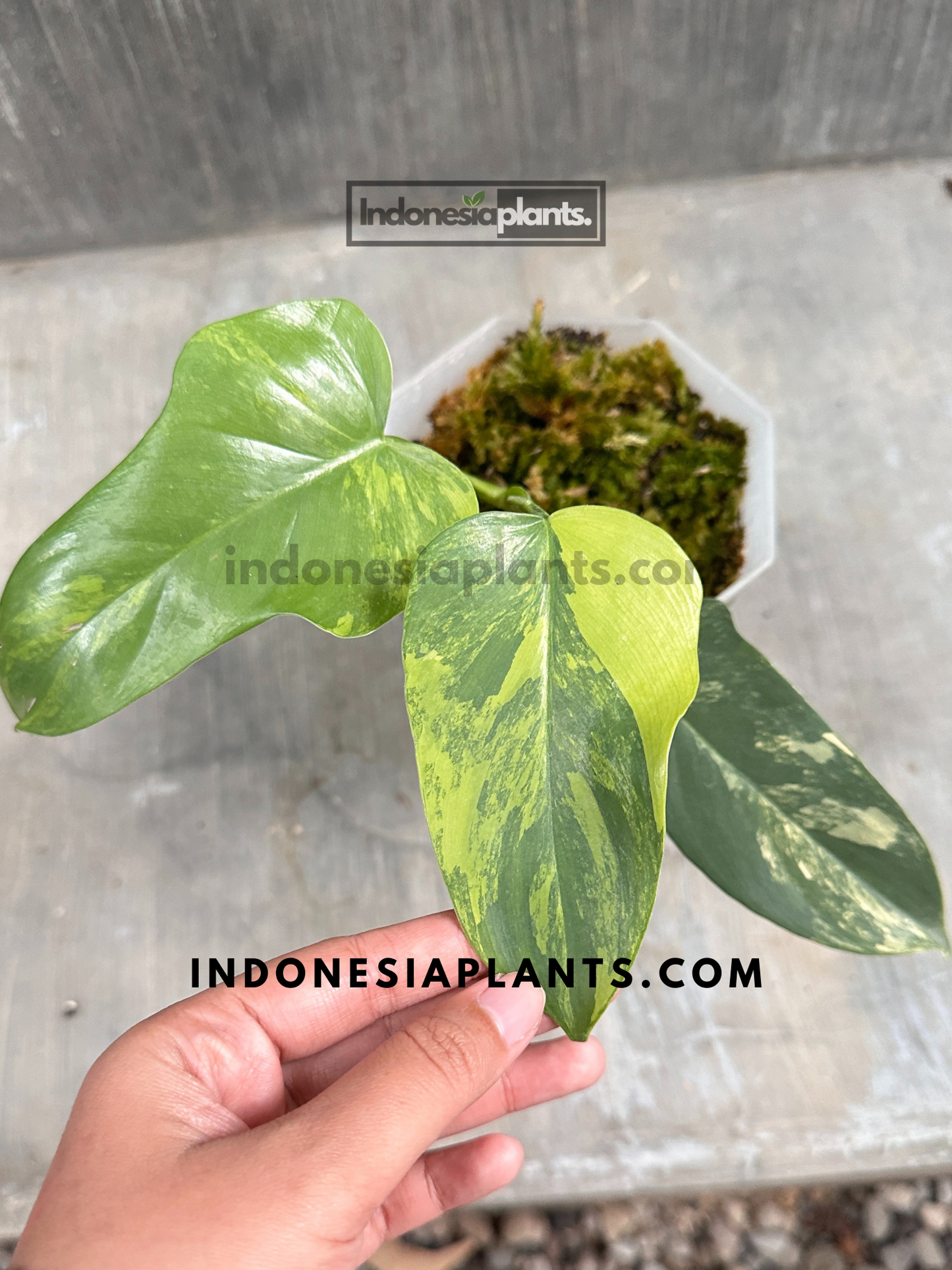indonesiaplants
Philodendron Bipennifolium Variegated | Philodendron Violin Variegated Small Size
Philodendron Bipennifolium Variegated | Philodendron Violin Variegated Small Size
Couldn't load pickup availability
See photos for reference of the plant features only. Sent to you more likely as featured with descriptions below:
Minimum of 3 leaves
Rooted not cuttings
Philodendron Bipennifolium Violin Variegated (Small Size) – A Compact Beauty with Stunning Leaf Patterns
The Philodendron Bipennifolium Violin Variegated (Small Size) is a rare and exquisite tropical plant, admired for its uniquely lobed foliage and striking variegation. As a young plant, it showcases compact growth while developing its signature violin-shaped leaves with creamy yellow and green marbling. This versatile, easy-care Philodendron is an excellent addition to any indoor jungle or rare plant collection.
What Makes This Violin Philodendron Unique?
- Violin-Shaped Leaves with Variegation – As it matures, the leaves take on a distinct violin-like shape, enhanced by splashes of golden, lime, and emerald hues.
- Perfect for Smaller Spaces – A juvenile-sized plant that fits beautifully in desks, shelves, or plant stands while still displaying breathtaking variegation.
- Fast-Growing & Climbing Potential – This vining Philodendron thrives when supported by a moss pole or trellis.
- Air-Purifying Qualities – Enhances indoor air quality by removing toxins and refreshing your space.
Curator’s Opening
In design terms, this plant reads like a lyrical object—sweeping waist, flared “shoulders,” and a tapered “neck” that together evoke the outline of a violin. Variegation in cream, mint, and soft lime glides over deep green, so each leaf behaves like a unique print pulled from the same plate. Even at a small size, Philodendron bipennifolium Variegated adds movement rather than mass: a lean vertical note that brightens shelves, desks, and narrow alcoves without stealing every lumen in the room.
Anatomi Visual (Form, Line, Negative Space)
The blade architecture is the headline. Juvenile leaves begin with gentle lobing; as the plant ascends a support, the “violin” profile clarifies—upper lobes broaden, the waist narrows, and the distal section elongates into a poised point. Variegation lands in swirls, sectors, and freckles; paler tissues act as natural highlights, while emerald fields ground the composition. Petioles carry a soft sheen, and the midrib runs clean like a string across the instrument. Because the outline is expressive, give the leaf silhouette room to breathe; a pale, matte backdrop lets the negative space around the lobes do quiet work.
Behavior Indoors (Light, Rhythm, Scale)
This cultivar prefers bright, diffused daylight—think east-window glow or a luminous setting behind sheers. Consistent luminance keeps the cream sectors crisp and prevents lanky spacing between nodes. In a small format, expect a tidy vertical arc with leaves ~12–25 cm across as it starts; with support and stable light, subsequent leaves broaden and the violin shape reads more decisively. Typical comfort range suits it well: 18–29 °C (65–85 °F) and ~50–70% RH, with gentle airflow to discourage stagnation around tender variegated tissue.
Kurasi Ruang (Placement, Pairings, Palette)
- Placement: A tall, slim planter on a shelf edge or a narrow pedestal near side light. Aim the leaf plane slightly toward the brightest wall so cream panels glow without direct scorch.
- Pairings: Contrast with velvety, deeper greens (Anthurium, Philodendron gloriosum) or a matte-leaf companion to tame reflections. Avoid loud, glossy planters that compete with variegation.
- Palette: Sand, ecru, limestone, or charcoal vessels frame the cream-to-mint tones. Limewash, microcement, and pale timber backdrops enhance the sculptural line.
Care Capsule (Concise, Effective)
- Substrate: Oxygen-forward aroid blend—chunky bark + coco fiber/coir + pumice/perlite, plus a modest sphagnum buffer. Air first, then even moisture.
- Water: When the top 2–3 cm (≈1 in) dries, water through and allow full drainage. Variegated zones prefer consistency over extremes.
- Support: A slim moss pole, coco totem, or cedar plank keeps internodes tight and accelerates the “violin” silhouette. Soft ties at each node protect petioles.
- Feeding: Light nutrition (¼–½ strength) during active months supports leaf expansion and color clarity.
- Grooming: Dust gently; wipe cream sectors with a soft cloth so they photograph cleanly. Rotate a quarter-turn every two weeks for balanced development.
- Note: As with many aroids, keep foliage out of nibbling reach.
Collector’s Aside
Color is naturally variable leaf to leaf. Lean into that: document the sequence as the plant climbs—pale panels will ebb and flow, but the overall composition remains harmonious when light and rhythm stay steady.
in your purchase or have any questions.




